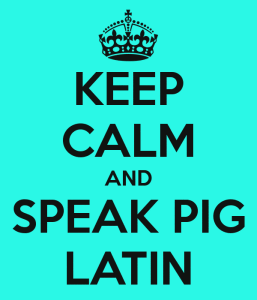Four made-up languages that have influenced real life
Medical Pharmaceutical Translations • Jun 22, 2015 12:00:00 AM

Whether they’re meant to be inscrutable, easily understood, or a way to bring a fictional universe to life, some made-up languages have had an impressive impact in the real world, even for people who’ve never heard of them. Here are four notable examples:
– Pig Latin
You might have spoken this made-up language when you were a kid…and maybe you still speak it today. No one knows exactly when Pig Latin originated, or how it got its name, but it’s been around for at least three centuries. ow-Way! If you couldn’t understand that, you can take a quick Pig Latin tutorial here. What was a childhood language for many of is like a playful child itself, hiding and sometimes popping up in the most unexpected places, including rap songs, computer games, and some of Thomas Jefferson’s letters. A few Pig Latin words, like “ix-nay” (nix) have even been adopted into English.
– Esperanto
Dr. Ludwig Lazarus Zamenhof’s dream wasn’t to create a “secret” language like Pig Latin, but one that anybody could use. In 1887 he published his first guide to Esperanto, and hoped the language would spread and become a lingua franca. Although that hasn’t happened, Esperanto has had a fair amount of success, considering it’s a constructed language. Today, around 1 million people understand it to some extent, about 10,000 are fluent speakers, and an estimated 1,000 people consider it a native language.
– Alienese
“Futurama” was an amazing TV show, from its hilarious writing, to its bright, detailed depictions of life in the future. One of these details was the form of writing used in this future world. Dubbed “Alienese”, it looked like a series of inscrutable symbols…until hardcore fans decided to see if it was a code. It turned that it was! The show’s creators originally set it up as a basic substitution cipher (one character = one letter in our alphabet), but when they saw how easily fans were reading the messages and sharing them online, they made the code a bit harder. Alienese’s connection to your life might not seem obvious, but to me, it’s something that shows the wonderful ways creative minds can interact with each other, especially with the internet. It’s also a reminder of the power of fandom: “Futurama” was doomed to cancellation until its fans did their darndest to have it brought back for a few more seasons on another network. Hey, they were dedicated enough to crack Alienese – are you all that surprised?
– Klingon
Of course this is on the list! Created for “Star Trek: The Motion Picture” in 1979, and further developed by linguist Mark Okrand, Klingon is the most widely spoken fictional language in the world today. There are Klingon translations of Shakespeare, Klingon dictionaries, even a Klingon Language Institute. Even if you’re not well-versed in Klingon, it’s hard to avoid mentions of it in all sorts of pop culture sources, from “The Simpsons” to “The Big Bang Theory”. It’s become a sort of code we all understand: having a character who speaks Klingon is a way to quickly explain to an audience that said character is a geek. You may roll your eyes at someone naming their daughter Khaleesi (“Queen” in the fictional Dothraki language that they probably heard on the TV adaptation of “Game of Thrones”), but don’t be so smug. It’s actually not that surprising: As this list goes to show, made-up languages don’t always stay in their original context or fictional universe.
